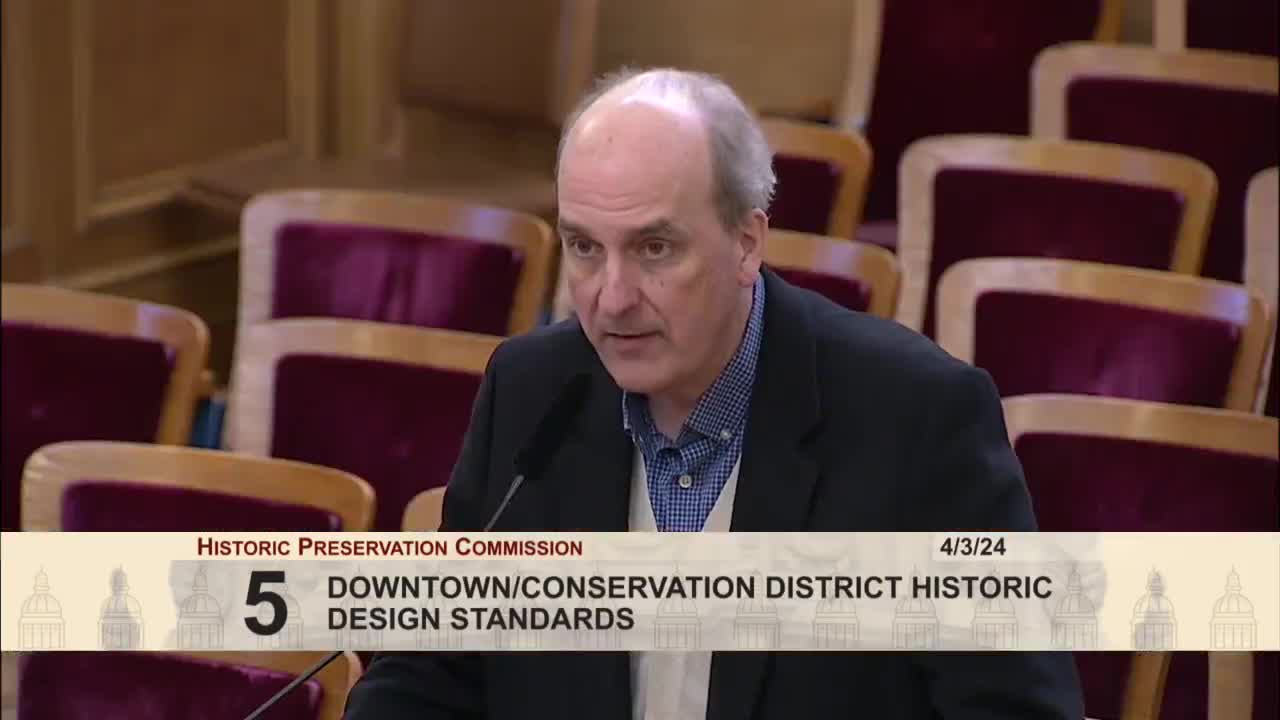San Francisco planning commission adopts new standards for storefront and signage design
April 03, 2024 | San Francisco City, San Francisco County, California

This article was created by AI summarizing key points discussed. AI makes mistakes, so for full details and context, please refer to the video of the full meeting. Please report any errors so we can fix them. Report an error »

In a recent meeting held by the San Francisco Planning Commission, discussions centered around the adoption of new standards for storefronts and signage, reflecting the city's ongoing efforts to enhance urban aesthetics while accommodating modern business needs. The proposed standards aim to streamline the approval process for small businesses and ensure that new developments align with the city's historical character.
Commissioners expressed strong support for the new guidelines, emphasizing their clarity and visual appeal. Commissioner Baldauff praised the standards for their well-produced graphics and clear guidelines, particularly highlighting the importance of neon signage in the downtown landscape. The consensus among commissioners was that these standards would facilitate a smoother process for businesses looking to establish themselves in the city.
However, some concerns were raised regarding the strictness of certain guidelines, particularly those related to matching historic storefront materials. Commissioner Campbell questioned the potential rigidity of the requirement to replace historic materials with exact replicas, suggesting that a more flexible interpretation could better accommodate modern design while still respecting historical context. Planning staff clarified that the intention is not to enforce exact matches but to ensure compatibility with the district's character, allowing for some creative interpretation when historic materials are no longer present.
The discussion also touched on practical considerations, such as the integration of architectural features like louvers and grills. Commissioners noted the need for flexibility in these standards to avoid compromising functionality while maintaining aesthetic integrity. The dialogue highlighted the challenge of balancing historical preservation with contemporary architectural practices, a theme that resonated throughout the meeting.
As the commission moves forward with these standards, they acknowledged the importance of ongoing revisions and updates to reflect the evolving needs of the community. The meeting concluded with a commitment to further refine the guidelines, ensuring they serve both the preservation of San Francisco's unique architectural heritage and the practical needs of its businesses.
In summary, the San Francisco Planning Commission's recent discussions underscore a significant step towards establishing clear, actionable standards for storefronts and signage. While the proposed guidelines aim to enhance the city's visual landscape, the ongoing dialogue reflects a commitment to flexibility and adaptability in the face of modern architectural challenges. The commission's next steps will involve further refinement of these standards, ensuring they effectively balance historical preservation with contemporary design needs.
Commissioners expressed strong support for the new guidelines, emphasizing their clarity and visual appeal. Commissioner Baldauff praised the standards for their well-produced graphics and clear guidelines, particularly highlighting the importance of neon signage in the downtown landscape. The consensus among commissioners was that these standards would facilitate a smoother process for businesses looking to establish themselves in the city.
However, some concerns were raised regarding the strictness of certain guidelines, particularly those related to matching historic storefront materials. Commissioner Campbell questioned the potential rigidity of the requirement to replace historic materials with exact replicas, suggesting that a more flexible interpretation could better accommodate modern design while still respecting historical context. Planning staff clarified that the intention is not to enforce exact matches but to ensure compatibility with the district's character, allowing for some creative interpretation when historic materials are no longer present.
The discussion also touched on practical considerations, such as the integration of architectural features like louvers and grills. Commissioners noted the need for flexibility in these standards to avoid compromising functionality while maintaining aesthetic integrity. The dialogue highlighted the challenge of balancing historical preservation with contemporary architectural practices, a theme that resonated throughout the meeting.
As the commission moves forward with these standards, they acknowledged the importance of ongoing revisions and updates to reflect the evolving needs of the community. The meeting concluded with a commitment to further refine the guidelines, ensuring they serve both the preservation of San Francisco's unique architectural heritage and the practical needs of its businesses.
In summary, the San Francisco Planning Commission's recent discussions underscore a significant step towards establishing clear, actionable standards for storefronts and signage. While the proposed guidelines aim to enhance the city's visual landscape, the ongoing dialogue reflects a commitment to flexibility and adaptability in the face of modern architectural challenges. The commission's next steps will involve further refinement of these standards, ensuring they effectively balance historical preservation with contemporary design needs.
View full meeting
This article is based on a recent meeting—watch the full video and explore the complete transcript for deeper insights into the discussion.
View full meeting
